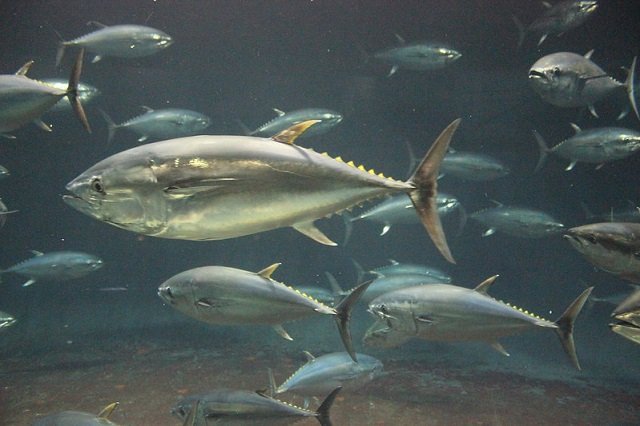
The salmon industry is expanding and offers development opportunities for remote areas where it is practiced. However, a recent study reveals a concerning trend: mass mortality events (sudden death of a large number of fish) are becoming more frequent and severe.
The frequency and scale of mass mortality events among farmed salmon have increased since 2012, according to a study published in Scientific Reports.
Gerald Singh and his colleagues from the University of Victoria, Texas A&M University, Memorial University of Newfoundland and Labrador analyzed salmon mortality data from Norway, Canada, the UK, Chile, Australia, and New Zealand (countries that produced over 92% of the world’s farmed salmon in 2021) between 2012 and 2022.
Boom times, risky business?
Salmon farming has gained popularity since the 1960s. Production has expanded beyond Norway to countries like Canada, Chile, and the United States. While this growth is impressive, it comes with environmental challenges:
- Climate change: Ocean warming and lower oxygen levels (hypoxia) stress fish, contributing to mass mortality events (MMEs).
- Diseases and parasites: Existing and emerging diseases, sea lice, and water quality issues threaten fish health.
- Production practices: Practices like delousing can weaken fish already stressed by environmental factors.
A worrying landscape
They identified 865 million cases of salmon mortality during this period and found that both the frequency of the top 10% highest mortality events and the maximum number of dead fish in mass mortality events in Norway, Canada, and the UK increased over the decade.
Additionally, the study’s findings paint a worrying picture:
- Increased frequency: From 2012 to 2022, the number of mass mortality events has significantly increased.
- Scale of mortality on the rise: These events not only occur more frequently but also affect a greater number of fish. The maximum number of fish lost in a single event has increased significantly over time.
- Different risks: The potential for major mortality varies by country, but all pose a threat that current safety measures may not be prepared to address.
- Beyond capacity: Current industry standards, designed to monitor animal welfare and respond to mortality, may not be adequate to handle the potential scale of future events.
Estimation of economic losses
The authors estimate that the maximum potential losses from a single mass mortality event are 5.14 million fish in Norway, 5.05 million in Canada, and over 1 million in the UK. They estimate that the maximum potential annual losses due to mass mortality events are 8.19 million fish in Chile, 4.39 million in New Zealand, and 1.55 million in Australia.
The study aligns with the concept of “manufactured risk.” This theory suggests that surpassing technological limits to optimize production in unstable environments can create new and unforeseen risks.
Manufactured risk: when solutions create problems
MMEs are not just environmental issues. They often arise from a combination of nature and human decisions:
Stay Always Informed
Join our communities to instantly receive the most important news, reports, and analysis from the aquaculture industry.
- High densities: Aquaculture facilities concentrate a large number of fish, making them vulnerable to disease outbreaks.
- Antibiotic resistance: Overuse of antibiotics can lead to resistant bacteria, making infections harder to treat.
- Waste and dead zones: Fish waste and decaying bodies create nutrient pollution, leading to algae blooms and “dead zones” with low oxygen, further harming fish.
Causes of events
The authors speculate that increases in the frequency and scale of mass mortality events among farmed salmon may increase with the adoption of technologies and production practices aimed at intensifying salmon production combined with increases in oceanic environment variability due to climate change.
They suggest that while new technologies and practices aim to reduce risks for salmon farming, they may also justify production in environments that could potentially expose a greater number of fish to hazards that may contribute to mass mortality events.
Conclusion
Understanding the potential for manufactured risk is crucial, especially now as the industry seeks to expand under the scenario of climate change and into new environments, such as offshore aquaculture. By researching trends in mass mortality events, we can assess whether salmon aquaculture is at increasing risk.
In addition to the death of a large number of fish, the authors warn that mass mortality events can have negative consequences for the salmon farming industry and the communities that depend on it.
The researchers recommend two critical actions:
- Improve data collection: Standardizing how salmon mortality data is collected will help us better understand the scope of the problem.
- Disaster preparedness: Salmon aquaculture must prioritize assessing and mitigating the risk of large-scale deaths.
The study was funded by the Department of Industry, Energy, and Technology in the Government of Newfoundland and Labrador, Canada; in addition to the Ocean Frontier Institute through a grant from the Canada First Research Excellence Fund. Additionally, the researchers received support from the Nippon Foundation Ocean Nexus Center at the EarthLab, University of Washington.
Contact
Gerald G. Singh
Ocean Nexus, School of Environmental Studies, University of Victoria, Victoria, Canada
Email: singhg@uvic.ca
Reference (open access)
Singh, G.G., Sajid, Z. & Mather, C. Quantitative analysis of mass mortality events in salmon aquaculture shows increasing scale of fish loss events around the world. Sci Rep 14, 3763 (2024). https://doi.org/10.1038/s41598-024-54033-9
Editor at the digital magazine AquaHoy. He holds a degree in Aquaculture Biology from the National University of Santa (UNS) and a Master’s degree in Science and Innovation Management from the Polytechnic University of Valencia, with postgraduate diplomas in Business Innovation and Innovation Management. He possesses extensive experience in the aquaculture and fisheries sector, having led the Fisheries Innovation Unit of the National Program for Innovation in Fisheries and Aquaculture (PNIPA). He has served as a senior consultant in technology watch, an innovation project formulator and advisor, and a lecturer at UNS. He is a member of the Peruvian College of Biologists and was recognized by the World Aquaculture Society (WAS) in 2016 for his contribution to aquaculture.




